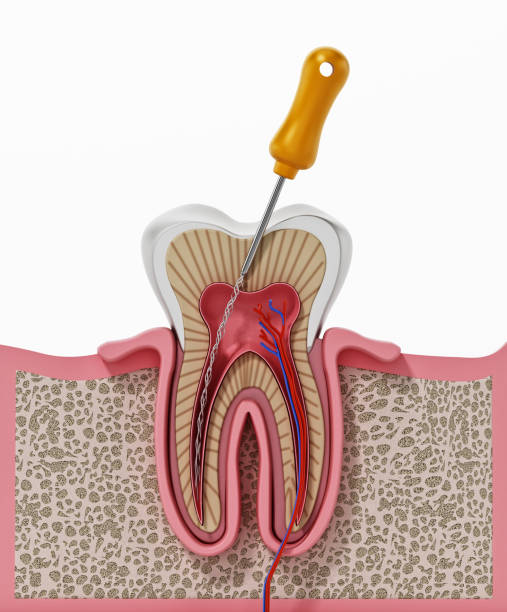Do you find yourself wondering if you will need endodontic surgery soon? If you just had a root canal to try to save one of your teeth, but it didn’t work, this could be the reason why.
The vast majority of the time, root canal procedures save teeth, but this isn’t always the case.
The next step is to make an appointment with a skilled endodontist so that it can be decided whether or not endodontic surgery can save the tooth.
Because teeth are meant to last a person’s whole life, it is very important to do everything possible to save a tooth that is about to fall out.
What is endodontic surgery?
In order to learn more about endodontic surgery before making a decision: If a patient knows what to expect before an important dental procedure, their chances of having a good experience afterward are much higher.
Endodontic surgery is a type of surgery that is done to save a tooth that couldn’t be saved with root canal therapy or to fix any problems caused by a root canal procedure.
Endodontic surgery can also be used to save a tooth that root canal therapy was not able to save.
What endodontic surgery is used for?
Here is a list of some of the different types of endodontic surgery that can be done:
Apicoectomy
The most common type of endodontic surgery today is an apicoectomy, which is also called a root end resection.
After having root canal therapy, a patient may need this kind of surgery if there is inflammation or an infection in the bone near the roots of a tooth or in the area near the bone.
During the treatment, an endodontist will make a small cut in the gum tissue to get rid of the swelling or infection. This will let them get to the area that is hurt.
To remove calcium deposits
When calcium deposits make it hard for a dentist to use his or her tools to do a root canal, the calcium deposits have to be removed through endodontic surgery.
When calcium deposits make it hard for a person to feel pain during a root canal, endodontic surgery is also needed.
This extraction is necessary to finish the root canal procedure, which involves first cleaning the area around the tooth, then filling and closing the canal so that the tooth can be saved.
To examine a tooth’s roots
Endodontic surgery is the procedure that is suggested as the next step when a patient goes to the dentist with persistent oral pain but the X-rays don’t show anything wrong that could be causing the pain.
There could be a small crack in the tooth or the canal that can’t be seen on the X-ray. An endodontist will need to make a small cut in the gum tissue around the cracked tooth so that they can look at it more closely. Once they figure out what is causing the problem, they will treat it in the right way.
Even though having surgery to save your teeth is not the best choice, there are times when it is the only way to save them.
Know that many of the cutting-edge dental technologies available today make it possible for dental surgical treatments to be done faster, with less pain, and with a higher success rate than ever before.
Before you agree to any kind of endodontic surgery, the endodontist you choose will go over everything that will happen during the surgery with you so that you are aware of everything that will happen.
When does the endodontic surgery come into the picture?
The three layers of a tooth are the enamel, which is also called the chewing surface, the dentin, and the pulp, which is often called the inner layer of the tooth. There are nerves and blood vessels in the pulp.
If the decay or infection isn’t treated, it will start to wear away the enamel, and within a few months, it will have reached the innermost layer.
When the infection gets to the pulp of the tooth, most people start to feel unbearable pain.
The first treatment option for patients in this situation is root canal therapy, which does not require surgery.
During the process, your dentist will remove both the damaged nerve and the decay. The chamber will then be filled with gutta percha, a sealant, and a temporary crown will be put on the tooth.
There are times when a root canal procedure may not be enough to save an infected tooth on its own.
When this kind of infection, like a dental abscess, is present, the oral surgeon may suggest that the patient have endodontic surgery.
How long does endodontic surgery take?
In endodontics, a retreatment is almost the same as a second root canal. So, if you can remember how long the first process took, you should be able to estimate how long the retreatment will take.
Root canal treatment singapore can be done in as little as 30 to 60 minutes if the tooth only has one canal.
Still, if you need a root canal, you should make an appointment with your dentist and know that the process will take about an hour and ten minutes.
A root canal takes a long time because your nerve needs to be cut out, cleaned, and sterilized. Some teeth only have one pulp canal, but other teeth have more than one.
A few minutes are also needed to give the anesthesia, get everything set up, and get ready.
Molars
Molars are the teeth in the back of your mouth that have four cusps. They can have up to four canals, which mean that a root canal procedure on them takes the most time.
A molar root canal could take longer than 90 minutes because the roots themselves take an hour to remove, clean, and fill.
Premolars
Your premolars are the teeth behind your front teeth but in front of your molars. They have either one or two roots.
Getting a root canal in a premolar may take about an hour or a little bit more, depending on how the tooth is made.
Canine and incisors
The two names for the teeth in the front of your mouth are incisors and canines. These teeth help you tear and chop food into smaller pieces as you chew.
Since they only have one root, they are much easier and faster to treat and fill during a root canal treatment.
Even if it’s one of your front teeth, getting a root canal can still take up to an hour, and that doesn’t include the time it takes to put a crown on the tooth if it needs one.
If your dentist can do the root canal and crown placement at the same visit, which doesn’t happen very often, you will need to add at least an hour to the time you thought the procedure would take.
This is only possible if your dentist can make the crown in their office on the same day you go to see them.
Your dentist may tell you to wait a little while after a root canal before putting a permanent crown on the tooth. This is to make sure the tooth has fully healed and won’t have any more problems.
Conclusion
It can be very upsetting to find out that a tooth that has already had root canal therapy needs a second procedure.
On the other hand, the process is almost the same, and about the same number of attempts is successful.
Even if an infected tooth that has already been treated has become infected again, it may still be possible to save it with endodontic retreatment.


